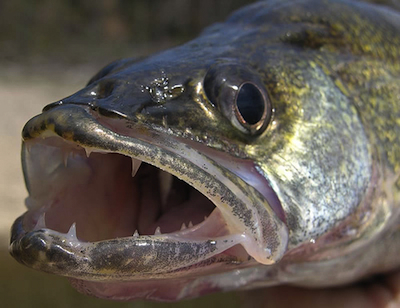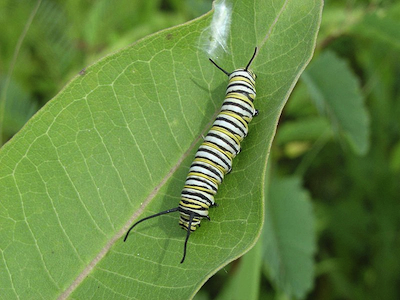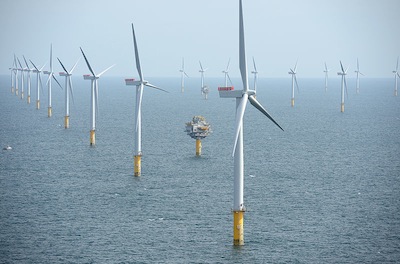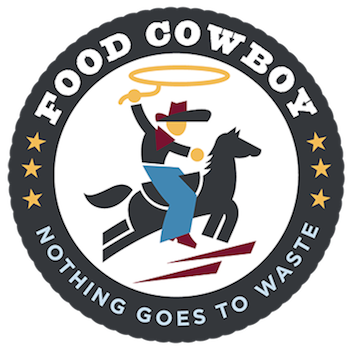You can sign up for this free environmental newsletter from Planet Waves to be delivered to your inbox each Tuesday evening.
Dear Friend and Reader:
You’re probably aware that the discrepancy between the number of people on this planet who do not have enough to eat and the amount of food wasted annually is obscene; according to the United Nations, 1.3 billion tons of food is thrown away each year. In response, tech innovators are developing ways to facilitate getting ‘unwanted’ food to those in need.
NPR’s Marketplace Morning Report profiled long-haul trucker Richard Gordon and his brother Roger Gordon on Monday. For 30 years Richard has trucked food up and down the East Coast; sometimes a shipment — say, of eggplant — would be rejected for superficial reasons.
“They say it should be dark or it should be purple. I’m not really sure what color eggplant is supposed to be, but a lot of times, eggplant is refused because it’s not the color they want,” Richard explained to NPR’s Sasa Woodruff.
“Or you might get a load of potatoes with too many eyes in it or too many curves and they reject it for that reason.”
When that would happen, he’d call his brother Roger to see if he could find a place that would accept the produce as a donation.
Eventually Roger decided to try taking the middleman out of the equation, and two years ago he launched a web and app service called Food Cowboy. It connects truckers with food charities and other entities along the commercial food chain. Those accepting the food pay 10 cents per pound; suppliers write off the donation on their taxes.
Rejected or excess perishable food needs to get to someone who can use it quickly, so it’s no surprise that food-rescue apps are being developed all over the U.S. to serve local communities (and elsewhere, including on the scale of individual households in the U.K.). Among those mentioned in the NPR story are PareUp in New York and CropMobster in California, and one called Spoiler Alert being launched in Massachusetts later this month by two MIT students.
“We have a lot of problems in this country, a lot of really complicated problems, but hunger and food waste shouldn’t be one of them,” says Roger Gordon. “We have enough food to feed every hungry person in America, wholesome food, every day.”
Fishing For an Answer? Clean Up the River
Unfortunately, not everything grown or caught in the U.S. counts as ‘healthy food’. For example, eating fish caught in the Lower Columbia River in Oregon may be hazardous to your health, according to a Sept. 29 article in The Oregonian — and sadly that’s the case in many places.
Environmental organization Columbia Riverkeeper recently tested both migratory and resident (non-migratory) fish species, including steelhead, shad, walleye and carp. Although none of the migratory species contained contaminants above current consumption guidelines, resident fish did — including a walleye with PCB levels 175 times the limit set by the Environmetal Protection Agency (EPA) for “unrestricted consumption.”

Not the prettiest face — and a walleye like this caught in the lower Columbia River could be downright toxic if you ate it.
PCBs, highly carcinogenic industrial chemicals, were banned in 1979 — demonstrating how persistent bio-accumulative toxins are, as they concentrate up the food chain rather than dispersing. (As Planet Waves reported Aug. 19, the U.S. Army Crops of Engineers finally confessed to its role in polluting the Columbia River through its dam construction.)
The sampled fish were obtained from local fishermen who planned to eat the fish in question.
“Fish advisories are not enough. We have to clean up the river,” said Lorri Epstein, Riverkeeper’s water quality director. “You can keep issuing advisories, but people are going to keep eating fish,” often for economic or cultural reasons.
GMO Soy Found in Infant Formula
Laboratory testing of infant formula purchased in Portland, Oregon, earlier this month revealed two products containing genetically modified soy engineered to withstand heavy pesticide spraying, reported The Statesman Journal Oct. 24.
The tests, coordinated between The Center for Food Safety and retired EPA scientist and former professor at Oregon State University Dr. Ray Seidler, discovered the GMO soy in two infant formula brands: Similac Soy Isomil and Engamil Prosobee Powder Soy Infant Formula.
“Everything we know from the recent medical literature suggests we should be doing everything possible to reduce infant exposure to chemicals,” said Seidler.
Both products contained soy engineered for resistance to Monsanto’s glyphosate (the active ingredient in Roundup herbicide) and Bayer Crop Science’s glufosinate. Glufosinate has been found toxic to reproduction and was banned by the European Parliament in 2009.
Lawsuits Filed Against EPA’s Enlist Duo Herbicide
Several U.S. farmer and ecological groups are fighting back, via two lawsuits, against the EPA’s approval last week of Dow AgroScience’s latest herbicide concoction, Enlist Duo, Reuters reported Oct. 23. (See coverage last week by Planet Waves.)

Monarch butterfly caterpillar feeding on milkweed. Like Roundup, Dow’s Enlist Duo promises to further starve migrating monarchs — to say nothing of what its toxic cocktail may do to human beings. Photo by the U.S. Fish and Wildlife Service.
One lawsuit was filed Wednesday in the U.S. Court of Appeals for the Ninth Circuit in California, seeking to overturn the EPA’s regulatory consent. The groups argue that the EPA did not adequately assess the human health impacts of 2,4-D, a component of Enlist Duo, before green-lighting the herbicide on Oct. 15.
“This was a rubber stamp. They acted illegally in approving this,” said Andrew Kimbrell, an attorney with the Center for Food Safety and a plaintiff in the case.
A second lawsuit, filed Oct. 15 by the Natural Resources Defense Council in the Washington, D.C. Circuit court, alleges depletion of monarch butterfly populations primarily due to glyphosate, and claims the EPA underestimated the toxicity of 2,4-D for people.
“Because of its documented impacts on the thyroid, a critical organ for brain development, infants and children are at especially high risk from adverse impacts of 2,4-D exposure,” said Kristi Pullen, an NRDC staff scientist.
The two chemicals have been combined in Enlist Duo to battle the rise of so-called superweeds that have developed resistance to glyphosate. Milkweed, the only food that monarch butterfly larvae eat, has not developed resistance.
Note: you can listen to an Oct. 16 interview Posted by WWGF News to YouTube about
the EPA’s approval of Enlist Duo featuring Planet Waves’ own Carol Van Strum and Jay Feldman, executive director of Beyond Pesticides. The full interview includes other guests — or you can listen to a 12-minute excerpt in which Carol focuses on what individuals angry about the EPA’s decision can do.
…And a Breath of Fresh Air
For one 2-hour period last week, wind turbines out-produced nuclear plants in the U.K., the BBC reported Oct. 21. A combination of high winds and several offline nuclear reactors meant that wind made up 14.2% of all power generation and nuclear provided 13.2%.

Sheringham Shoal Offshore Wind Farm, England; the U.K. has the largest shallow-water offshore wind resource in the world. Photo by Harald Pettersen/Statoil via Wikimedia Commons license.
Although the milestone was temporary and wind power is controversial amongst environmentalists, those who see nuclear’s long-term waste problem and potential for runaway disaster as bigger evils may take heart. However, until inexpensive storage technology is developed to make up for significant periods of negligible wind, the country will continue to rely heavily on nuclear and fossil fuels.
Not helping matters, notorious former U.K. environment secretary Owen Paterson is calling for a new generation of mini nuclear plants across the country — as though their meltdowns would be less radioactive.
Counters Jennifer Webber, spokeswoman for trade body RenewableUK, “Wind power is often used as a convenient whipping boy by political opponents and vested interests.” She adds, “All the while, it’s been quietly powering millions of homes across the U.K. and providing a robust response to its vocal detractors.”
Yours & truly,
![]()
Amanda Painter and the ECO editorial team
You may forward Planet Waves Monsanto Eco to your friends. They can sign up for this free environmental newsletter from Planet Waves. View this edition as a webpage.
Planet Waves Monsanto Eco (ISSN 1933-9135) is published each Tuesday evening in Kingston, New York by Planet Waves, Inc. Publisher: Eric Francis Coppolino. Editor: Amanda Painter. Business Manager: Chelsea Bottinelli. Web Developer: Anatoly Ryzhenko. Research, Writing and Editing: Planet Waves Monsanto Eco is produced by a team consisting of Amy Elliott, Carol van Strum, Len Wallick and Chad Woodward.



Heartfelt thanks to Amanda and the ECO team for once again keeping us abreast of environmental and climate change issues. Special thanks for giving some “ink” to Food Cowboy and other such organizations, and the special people in those organizations.
Food Cowboy sounds wonderful. When I lived in Moscow, Idaho, I remember being told by someone who worked at a local grocery store that they had to throw away all produce that wasn’t perfect because they couldn’t charge the same price for something with a blemish or a bit smaller because people wouldn’t buy it and they couldn’t give discounts. Nor were they allowed to donate it or give it away, and employees would be fired for taking home anything they were going to throw away. The company said they didn’t want to be responsible for someone eating spoiled food and they wouldn’t be able to control for that.
Also, now I’m living in Portland and it blows me away that parts of it feel so green and beautiful, but we have nuclear runoff found coming from Hanford, PCB’s from another direction, and the threat of coal exports for Ambre Energy polluting our water. This certainly isn’t a new observation, but there is so much below the surface.